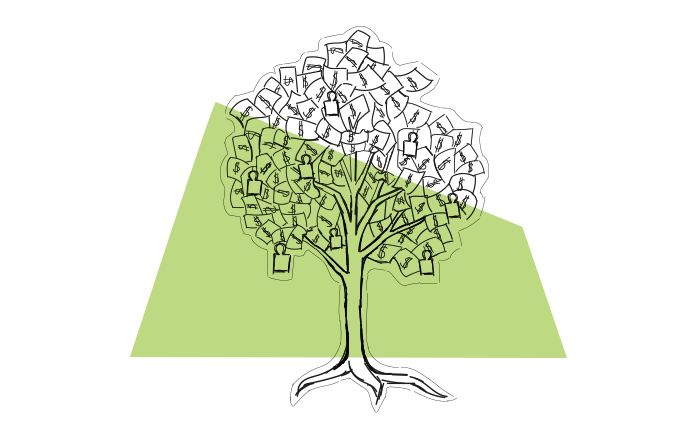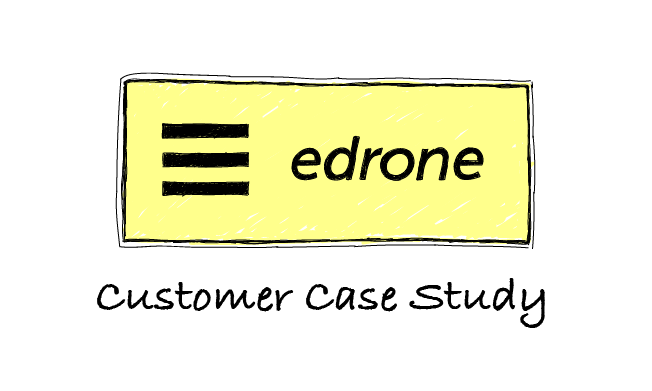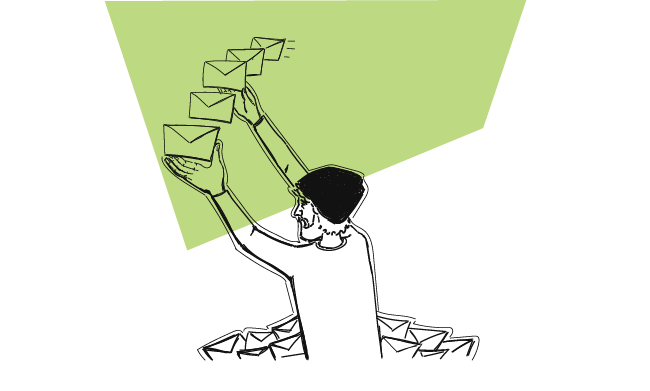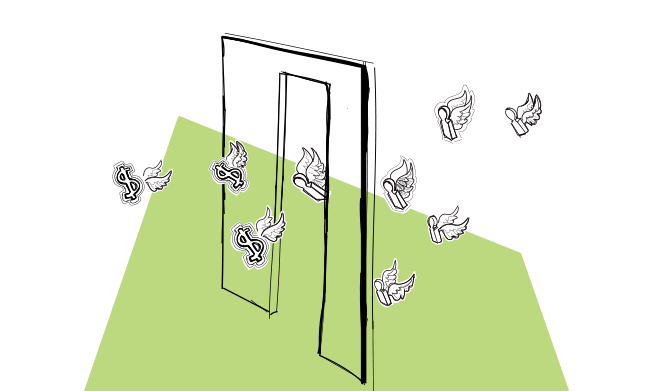You might have the best SaaS product in the world, but still getting users to convert into paying customers won’t happen by itself.
This process needs to be thought through and designed so as to nudge the user in the right direction.
But how do you do so? What determines if users will convert or not?
I asked SaaS Growth Specialist Michał Fiech to help me out with this one and chime in on the topic.
Ready? Let’s go.
What’s an optimal free trial to paid conversion rate in SaaS?
Let’s start with some benchmarks.
You might have looked at your free trial conversion rate and wondered if your company is doing OK — or maybe it should be doing a whole lot better?
Sure it’s nice to see where you rank among your SaaS peers, but truth be told, “SaaS” has become such an umbrella term for businesses that offer cloud- or web-based services that different companies may have very different conversion rates and still all of them can be extremely successful.
The rate might vary significantly depending on a bunch of factors, e.g. your market, product category and how the free trial is designed. If you require a credit card number when someone’s signing up to take your product for a spin, the conversion rate will usually be higher. Why? Because fewer low-quality users will go through to the top of the funnel.
As to what actual free trial conversion rates Michał sees in SaaS companies, it usually ranges between 1-15%, depending on the industry and market.
So how do you know if there’s still a point in testing and tweaking your approach to free trial conversion?
If you’re testing a backlog of optimization hypotheses and you’re seeing reasonable uplifts, go for it and double down your efforts.
When you reach the point where each next experiment brings a small and insignificant increase in conversion rate, it might mean that you’ve hit your maximum and you should either start taking on bigger experiments, such as testing the trial length or its packaging, or move on to other business areas, like acquisition, retention or increasing your ARPU.
So as to the trial length…
How long should a free trial be for SaaS products?
SaaS companies set their trial for different periods — you might have come across 7-day trials, 14 or 15-day ones, and ones that stretch out for a whole month.
And while it might seem a good idea to give your users more time so they can better see the value of your product, 30 days might just turn out to be too much for some businesses.
People are usually able to make the decision whether they want to pay for your product or not within several days after signing up for trial. When you stretch out that time, you may actually see the conversion rate drop, as people put off the decision and finally forget about it.
In some cases a 7-day trial might prove to be the best choice, but for most SaaS businesses a 14-day (or so) trial period is optimal — it gives the users enough time to test the product, but not as much so they put the decision off and forget about it.
The best approach is to test it for yourself to see which length matches your audience best.
Now, let’s move on to why trial users might not be converting.
What are the reasons free trial users don’t convert?
What’s the reason trial users go AWOL instead of clicking the “upgrade to a paid plan” button?
According to Michał, it usually boils down to one of these three reasons:
- Lack of fit between what the user expects and what the product offers
- Broken activation experience (so users don’t get the true value of your product — or they do get it, but without a habit that will be retained in the long term)
- Building the activation process solely with conversion in mind (instead of building habits in the user)
Lack of fit between what the user expects and what the product offers
This might happen if your product could serve various use cases and your marketing team promotes them on the website or in the ads (e.g. because they know people are searching for it in Google), but the product itself serves these purposes rather poorly, either because it lacks proper features, or because the activation experience for a particular use case is poor (Michał refers to this as a “broken activation experience”).
If you promise to sell cake to get people interested, but what you’re actually selling looks and tastes more like bread — well, you can see why they’d get disappointed and never come back to your bakery.
What your product does and what you say it does should be as consistent as possible.
Also, if you’re promoting certain use cases, remember about them throughout the user journey with your product — don’t make it all about the website and then send users into a general flow.
Broken activation experience
This happens when:
- users who are testing your product aren’t being onboarded — they get into an empty app with no guidance whatsoever, or
- they’re not being onboarded properly — the onboarding experience is a one-size-fits-all kind of thing (e.g. someone wants to use only one feature, but needs to set up 5 of them, as that’s how the product team designed the process for all users)
Building the activation process solely with conversion in mind
All SaaS companies know how important customer retention is. And that’s what SaaS products should aim to do — work to keep users aboard for as long as possible (hopefully, forever and a day).
Getting someone to sign up and make the first payment is great, but after that — let’s just say the ball’s still rolling. You need to work on getting into the user’s workflow and make sure they’re building a long-lasting habit around using your product.
Short-term optimizations that boost the conversion rate to a paid account will only get you so far. Churn is way more expensive.
What determines when a user is going to convert?
There’s one thing we can be fairly certain of — in most cases users won’t pay until they have to. So if you offer a full-feature trial without any limitations, the vast majority of the users will pay right before the trial ends (or even after, if you don’t handle the reminders correctly).
That’s why it might be better to design a proper freemium plan or a free trial that limits the usage to some degree. For example, for the Woodpecker trial you either get to use the app for 7 days or send 50 emails — whichever comes first.
That’s how you can speed up the conversion. As Michał points out, designing it the right way is the trickiest part, though.
The moment of conversion also depends on how and when you nudge the users to pay. If you suggest paying faster, you might be able to push the process forward.
How to convert free trial users to paying customers?
Let’s get the most important thing out of the way first: there’s no silver bullet that will work everywhere and for everyone.
What Michał advises here, is to take a long-term approach instead of looking for brilliant tactics to help you overnight. Just to be clear — tactics will still be there, but it’s better to look at them as tools for achieving your goal, which should be: making sure the perceived value of the product is always higher than the perceived cost of the product + the friction that the user encounters during the trial period.
If you follow this approach, you’ll soon find yourself optimizing the activation and checkout process to better onboard users — specifically for their use cases and in such a way that creates a habit about using your product.
How can you build such a habit in the users? Guide them to the moment that gives them some kind of a “reward” that’s important to them.
When that’s done, your product’s value will rise much higher in their minds and it’s going to be easier to justify its price.
When you have that in place, you need to also make sure the checkout process is seamless, so you’re not creating any hurdles they’d have to jump over.
Couple of words on tactics
Having in mind that these are always short-term, you can juggle a variety of tactics to increase free trial to paid conversion. Some of these include:
- creating an account-wide notification system when the trial is about to expire
- limiting trial features/usage limits/trial length (to make sure the users who’ve reached the AHA moment need to convert into a premium account to use the tool more efficiently)
- optimizing/fixing the checkout flow, so any friction — either physical or cognitive — is removed or at least decreased
- offering incentives to make them convert quicker (which, in Michał’s experience, is the least effective one)
Which channels are the most effective for boosting free trial conversion rate?
Hands down, the product itself.
The silver medal goes to various notifications (emails, push, in-apps) — as an addition to the product.
As Michał puts it, designing proper user flows is crucial, ‘cause it might be difficult to bring users back to the app once they leave it. The flow needs to point users to do the actions that matter at the beginning.
All the other channels should support the product and take users back to the product flow.
I agree with Michał on this — it might be difficult to bring users back to the app once they leave it. But connecting with them via channels other than the product itself might support the user activation quite nicely.
To sum up
Free trials are samples of what value your SaaS product brings. It’s a way to show the users what they can do thanks to it.
By designing a well-thought, personalized onboarding experience in the product, and getting a little help from other channels, such as email, you’ll raise the chances of boosting your conversion rates.
READ ALSO

How to Hack Your SaaS Business Growth? Tips from Larry Kim
Is there a proven formula to grow a company into a million-dollar business? I’m afraid not. But simply learning from the best players and replicating their strategies can get you on the right track.

Customer Case Study: How edrone.me Builds Relations with Future Customers Using Cold Email
It's a dream for a SaaS team when they hear that a customer of theirs is satisfied with the service and wants to share their experience as a case study. That's what happened to us when Michal Blak, the Co-founder and CEO of edrone.me told us that he's open to tell the story of his team's experiences with Woodpecker. Michal Konieczny, who takes care of business development at edrone, added his two cents and here we are. Check how the e-commerce CRM uses Woodpecker to start conversations with their ideal customers.

How to Use Personalized Emails to Improve SaaS Customer Retention
If you're in a SaaS business as we are, you know that you need the right strategy to deal with churn. Etienne Garbugli from Highlights, new software that uses a subscription model, wrote a guest post for the Woodpecker blog. All about using email for customer retention.

